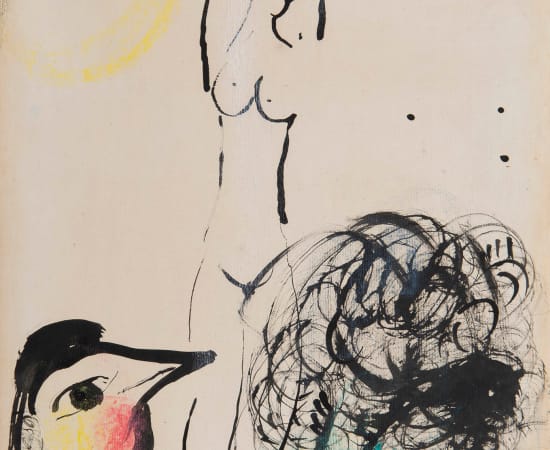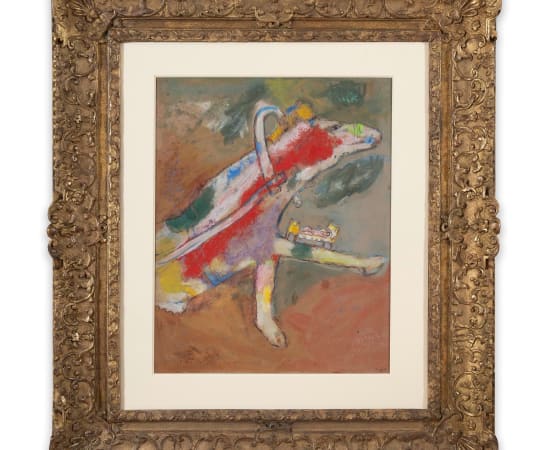Marc Chagall (1887-1985) Russian, later French
Works
Biography
Chagall died in 1985, almost a century old. He crossed the twentieth century, saw a revolution, wars and exile, rubbed shoulders with some of the most innovative artists, produced a work in which can read his intimate experience of history, memories of his meetings, his travels and of his country.
The twentieth century, in large part, repressed allegory and narrative in the works of art. And it is because Chagall was able to overcome the rules,codes and diktats of modernist thought while feeding, he may remain figurative and testify of his time. It borrows from the avant-garde movements (Cubism, Suprematism, surrealism) some of their forms, sometimes seems to get closer, but still remains independent. The parallel between the war pictures and images of peace reveals the complexity of a work that is never reduced to a given genre, but incorporates the events, situations and emotions of the artist. Thus, depending on the circumstances, Chagall visit and revisit some topics, enriching each time a personal dimension: his hometown of Vitebsk, Jewish traditions of his childhood, biblical episodes including the Crucifixion, and the torque and family.
After spending three years in Paris, Chagall goes to Vitebsk to find his fiancée Bella whom he married in 1915. He is surprised by the declaration of war. Although far from the front, it reflects a harsh reality: troop movements, wounded soldiers, Jewish populations expelled from their villages. Likewise, it seeks to represent the environment of his childhood which he senses and evokes the disappearance, in a series of paintings, his intimacy with Bella. In 1922, Chagall finally left Russia. After a stop in Berlin, he returned to Paris where he must again form an artistic identity. He is dedicated, at the request of the publisher Ambroise Vollard, in different books including the Bible illustration of a text which he is so familiar from childhood he will say "I do not see the Bible, I dream it ".
Alongside the works dedicated to landscapes, portraits and circus scenes, he produced paintings displaying hybrid characters half-animal, half-human, perfect illustrations of bestiary chagallien and numerous pictures of the couple as much metaphorical representations his love of life. In 1937, Nazi authorities seize Chagall's works in German public collections and three of his paintings are featured in the exhibition "Degenerate Art" in Munich. Political events forced Chagall to leave France and go into exile in the United States in 1941. Installed with Bella and Ida in New York, there are several artists and poets Jewish exiles like him. Although far away from places of conflict, Chagall was aware of the barbaric acts that devastate Europe and his homeland. War, persecution, exodus, burning villages then haunt his paintings now, a dark tone pervades his painting. The theme of the Crucifixion is imposed on him as a universal symbol of human suffering. His work, especially creative during this period still reflects the need to return to its roots. He paid tribute to his wife Bella, who disappeared in 1944. Chagall returned to France permanently in 1949, settling in Orgeval, then Vence. He then takes the distance with the past.
The artist dedicates himself to great cycles as the series of monuments of Paris and exploring other techniques (stained glass, sculpture, ceramics, mosaics, various techniques of engraving ...). His use of color changes considerably and gives birth to tables that combines both expressive tones and amazing brightness.
Source: Biography taken from the press release of the exhibition "Chagall, between war and peace", presented at the Musée du Luxembourg from 21 February to 21 July 2013.
Enquire



